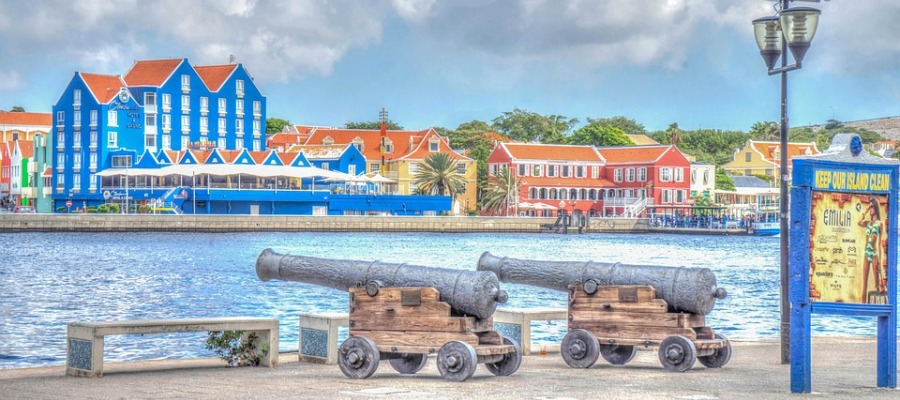In many ways, Curacao is the historical nexus of the Netherlands Antilles. The island, with its large and protected natural port, was charted before the 16th century…
In many ways, Curacao is the historical nexus of the Netherlands Antilles. The island, with its large and protected natural port, was charted before the 16th century and eventually became a major center for mercantile commerce. It is the birthplace of Papiamentu (as it is spelled on Curacao), the polyglot lingua franca of the ABC Islands which is spoken to an extent as far north as the Netherlands Antilles islands of Sint Eustatius, Saba, and Sint Maarten. And the island is, on another level, the birthplace of the famous liqueur, Curacao, perhaps more well known in some circles than the island itself.
After the late15thcentury voyages of Christopher Columbus put the Caribbean, literally, on the maps, the area was wide open for European exploration. The Spanish soldier and explorer Alonso de Ojeda, joined by the Italian Amerigo Vespucci, set out on a voyage (1499-1500) to chart much of the South American coast and, in turn, several offshore islands in
the area. One was Curacao. As an aside, disputed claims are par for the course when it comes to Vespucci. One of many stories has it that during his voyage with de Ojeda, a number of sailors on his ship came down with scurvy, whereupon he dropped off the hapless souls on Curacao on his way to South America.
On his return, he found the sailors alive and happypresumably cured by the abundance of Vitamin Claden fruit on the island. He then is said to have named the island Curacao, after an archaic Portuguese word for “cure”. Of course, Vespucci was Italian, not Portuguese, and de Ojeda was Spanish, but these stories seem to take on a life of their own, and are often much more fun than the real story. A more convincing theory is that the Spaniards called the island Curazon, for “heart”, and the mapmakers of the day converted the spelling to the Portuguese Curacao.
Also during this time, Jewish families from Amsterdam established settlements on Curacao and attracted others from Europe and South America, fleeing from the remnants of the Spanish and Portuguese Inquisitions. By the early 18th century, the Jewish population in Curacao had reached 2,000.
In 1920, oil was discovered off the Venezuelan coast. This signaled a new era for Curacao, and for its sister island in the ABCs, Aruba. The two islands became centers for distilling crude oil imported from Venezuela, and Curacao’s Royal Dutch Shell Refinery became the island’s biggest business and employer. Immigrants headed for Curacao, many from other Caribbean nations, South America, and as far away as Asia. During WW II, the Allies judged Curacao and its refinery to be important enough, and strategic enough, to establish an American military base at Waterfort Arches, near Willemstad.
After WW II, Curacao joined the rest of the Caribbean in a loud clamor for independence. What it got instead was a measure of autonomy as an entity within the Kingdom of the Netherlands. Curacao, along with, Bonaire, Saba, Sint Eustatius, and Sint Maarten, became the Netherlands Antilles, with the administrative center in Willemstad. Aruba separated from the other five islands on January 1, 1986. Sint Maarten and Curacao became independed on October 10, 2010 and the islands of Bonaire, Saba and Sint Eustatius became specialmunicipalities within the country of the Netherlands.
